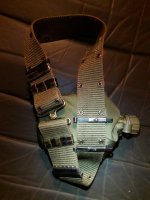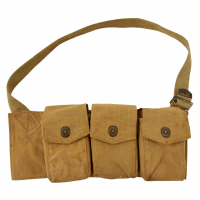Is there a general consensus on the proper way to wear a pack that doesnt have a hip belt? For example, should the shoulder straps be tightened up enough that the pack rides high on the upper back? Should they be loosened to allow it to rest in your lower back above your butt?
I never thought to question if my pack fit/posture with my beltless daypacks was incorrect.
I think it depends on the person. I did most of my hiking as a kid without a pack frame and when I did get an aluminum pack frame it had no waste belt.
I liked to keep the load high as in the sleeping bag on highest point on top of the pack (and that was a military feather filled mummy bag at between 6-7 pounds) which is easy to do with a pack frame that goes above your shoulders.
With just a canvas pack I used to make a kind of a cardboard box for the inside of it so it was not saggy.
Without the frame I usually tried to form the sleeping bag into a horseshoe shoe as the marines did. On the hike back that cardboard was often gone used up to light fires.
Unknow scouts/hikers. Most tend to like the high load, but the one guy has the horseshoe.
Also notice in the picture the pack straps are unpadded. If you have a thick wool coat or the one that appears to be a leather one the coat acts as the padding.
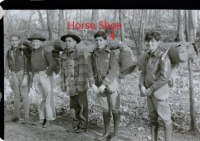
In the old days the sleeping bags were the heavier part of the load. But now that I am thinking about it I believe it was said back at that time to keep the heavier stuff near your back, so it has less leverage for the weights to pull/bend you to the rear.
Not shown in the picture some people used to tie their sleeping bags on the bottom especially if they had a frame as shown. Noice that the frame did not come with a waist belt.
When I had a similar frame, I put the sleeping bag on top.
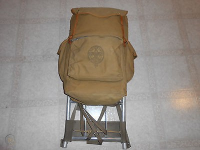
The other type of common pack frame was as below. It was too short for a waist belt and some people crammed the sleeping bag at the bottom between the frame and the pack.
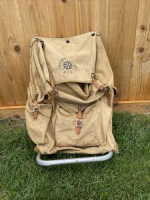
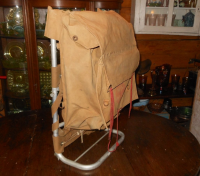
Just for reference when waist belts started becoming common, they were not the nice, padded ones.
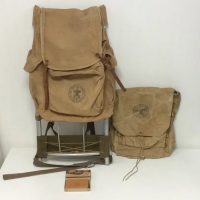
So, a lot of hiking and perhaps some sufferings have been done without the waist belt on a pack.










